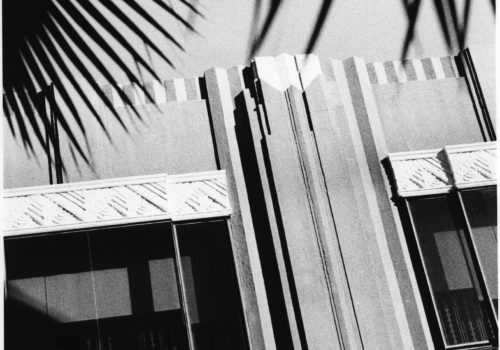“In 1959, I was a young lieutenant working as a photographer on board the USS Tanner. In my spare time I would explore the shipʼs library. A slim volume attracted my attention. It was Four Quartets by T.S. Eliot. These poems made a powerful and strange impression. The rhythm of the words conjured up images that came from their position on the page. It was only ten years later that I began to understand the true meaning of sequences of images on a page. The sequence of photographs in The Somnambulist was the direct result and the exploration of feelings that I had had years before, in the ship’s library. Eliot’s word-shapes on the pagespoke in many ways; they were precise but never too literal. I was attracted by this kind of experience, and I now know that it was one of the ways the creative process was to reveal itself in my own work. I’m sure there are other similar examples of this phenomenon.
An exhibition of my prints in a gallery or museum reveals a relationship to the photographic medium. One can immediately see my attitude to the film, the light, the lenses, and the way the camera is handled.
A book, however, is another story. A book reveals my thoughts on my photographs and the context they are supposed to be seen in. This is an important distinction. The context, as Marcel Duchamp clearly showed, is everything. We will perceive a naked bust entitled “the breasts of Venus” in a completely different way from the same image labeled “Still no treatment for breast cancer”. In a book, I can have full responsibility for the context of my work. The title informs the viewer about the context in which the images are supposed to be seen. I can begin a book project with no more than 10 or 15 images. The first double page spreads, usually about four or five of them, set the tone for the sequence to follow. The sequence is then modified by the addition of more recent images as and when they arrive.
The title sets the tone and defines the starting point for the work to come. This can continue for years; certain projects last a whole lifetime. I’ve been taking photographs in France and Italy for over 30 years. This is also true for nudes. You never reach the end of that kind of work. Whereas the visitor at a photography exhibition is free to wander at will through the gallery, a reader holds the book a certain distance from his eyes, and is generally sitting in his favourite well-lit armchair. This visual distance is almost always the same from one person to the next. With that in mind, I’m sure that certain spatial relationships between images will be coherent, and that they will be seen in the same way by everyone. I can build on that principle.Then comes the sequence of double pages, often designed to create a non-specific story, or elliptic linearity. The totality of the images exceeds the sum of their parts. Books can talk about anything, but a really good book is an uninterrupted chain of right decisions”.
Ralph Gibson
4 november – 11 december 2010
Galerie Lucie Weill & Seligmann
Ch. Zalber
6 rue Bonaparte, 75006 Paris

















